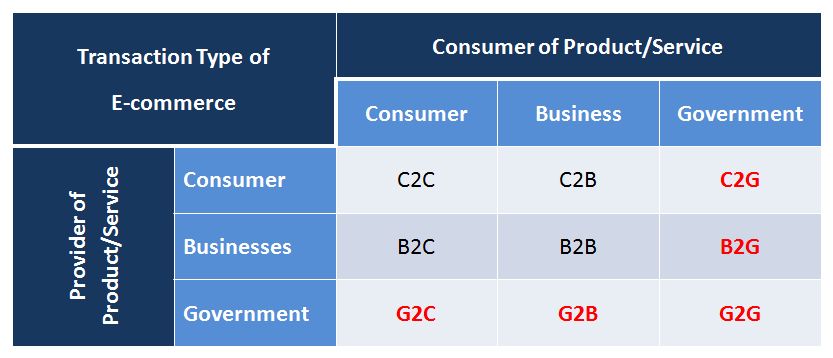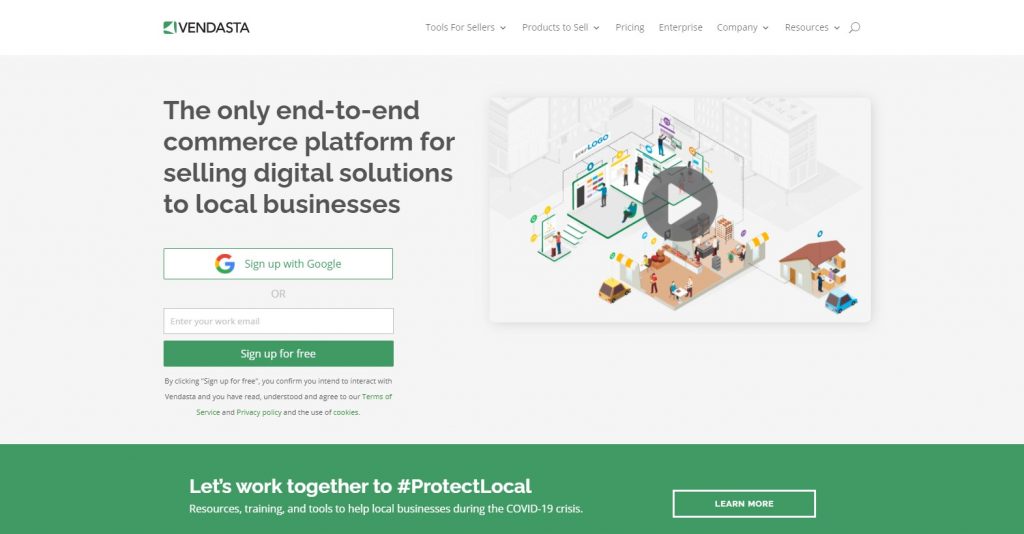eCommerce has grown rapidly over the last few years, and its existence has literally been a lifesaver during the lockdowns of COVID. Online stores are flourishing like never before. In many cases, the biggest problem they face is sourcing sufficient stock to sell, rather than finding customers.
Unlike traditional bricks and mortar stores, it can be relatively cheap to set up an eCommerce business. This makes it an accessible sector to enter, although fierce competition may mean that it is not so easy to survive unless you have planned your business clearly and know precisely what you want to achieve.
If you wish to set up an eCommerce business, you need to set clear goals. You need to know precisely the type of eCommerce business you want to operate and why.
There are a few fundamental decisions you have to make as part of your planning. In particular, you need to be able to describe the type of business you intend to establish. You need to be able to describe your intended customer and how you intend to make money. You also have to decide how you intend to sell your products, along with a general idea of the marketing methods you will use.
In this post, we have categorized eCommerce businesses in various ways. Although you may fit into more than one group in each section, you need to decide where you intend to place your focus. For example, if we were doing this task for Amazon (who in reality probably sell goods in all categories), their primary focus is on B2C (business to consumer), predominantly selling a selection of products to their customers as an online retailer of other firms' goods.
Types of eCommerce Business:
By Type of Customer
When we classify businesses by type of customers, we are looking at who the intended end user of your products is. These will either be consumers, businesses, or government. Of course, you might be happy to sell to all three sectors; large eCommerce businesses like Amazon and Rakuten probably do. But they will likely focus more on one of the three types of customers (consumers in the case of Amazon, businesses for Rakuten).
Although we refer generically to "eCommerce businesses" here, the reality is that there are also a few eCommerce marketplaces designed for consumers to make sales, so we have included these classifications in this section too.
1. B2C – Business to Consumer
This is undoubtedly the most common type of business model. You are a business that sells goods or services to consumers, who, in turn, use your products in their everyday life. This is where you include all those brands that sell something to "people."
Before the internet, most brands sold their products to wholesalers, who then sold to retailers. To some extent, this still occurs online too. The only situation where these brands may have sold directly to customers may have been through a small factory shop. However, the internet has provided enormous opportunities for brands to reach out directly to consumers via a company eCommerce store. This gives brands the chance to cut out the middleman and sell directly in a comparatively low-cost model.
As a rule, B2C businesses face a much shorter decision making process than other business types. People will often buy cheaper items on impulse. They may spend time researching more expensive goods and nowadays take great heed of online reviews, but they still tend to make decisions relatively quickly.
2. B2B – Business to Business
Companies that consider themselves to operate a B2B model sell their goods or services primarily to other businesses. Sure, they may sell some products to consumers or the government, but they make the bulk of their sales to other companies.
The best way to think about B2B eCommerce companies is to consider their customers. Do these customers use the products they buy from this firm to help produce whatever they sell? An obvious case would be the 3D printing company, 3DXTech, that sells fiber filaments and other related supplies to firms that use 3D printers to make the products they in turn sell.
The giant Chinese company, Alibaba, will happily sell to anybody who wants to buy their products. However, because they sell in bulk, their primary market is businesses looking for stock at wholesale prices to resell profitably.
B2B firms often have to work far harder to gain customers than B2C firms because businesses typically have to go through strict procedures when determining suppliers. However, once a relationship is formed, they are likely to remain suppliers until the brand undertakes a new requisition review.
3. B2G – Business to Government
Some eCommerce businesses have government agencies as their primary customer base, hence B2G – business to government. Many of these will also offer B2B, and perhaps a few B2C. In most cases, B2G suppliers have to meet requirements published by a government entity through a structured bidding process. This means that B2G businesses will have to meet set criteria and specifications if they are to be considered seriously, which means that these firms are unlikely to operate a traditional online store.
4. C2B – Consumer to Business
This is an unusual situation where people market their services to businesses. Perhaps the best example of C2B is online freelancing. Individuals promote their skills in specialist online marketplaces like Upwork. Businesses, in turn, come to these marketplaces looking for freelancers to meet a short or long-term need.
For example, many freelance writers list their services on Upwork. If a brand wants a blog post writer, for instance, they can record their requirements on Upwork, and potential writers can bid for the job. Alternatively, the business can selectively search through Upwork's database to find suitable candidates.
Some of the influencer platforms that we have reviewed at the Influencer Marketing Hub provide a similar service as an influencer marketplace.
5. C2C – Consumer to Consumer
The internet has opened up many opportunities for consumers to sell products to other consumers. Previously, they would have had to rely on newspaper classifieds or garage sales to do this. Sites like Craigslist and eBay have provided easy-to-use marketplaces for people to sell their unrequired or redundant items.
By the Ways You Can Make Money
1. Selling Your Products to Customers
This occurs whenever you make a product, marketing it directly to your customers online. This can be as simple as a bakery selling its products from a company website or a jeweler selling bespoke items from its website.
These can be physical products, like the examples above, or digital products, like a business creating a course and then marketing it online (whether they host it on their own site or upload to a site like Udemy.
2. Selling "White Label" Products
If a business buys unbranded products and rebrands them as its own, these are called "white label" products. It is surprisingly common for eCommerce brands to purchase generic products and sell them as their own.
The name "white labeling" dates back to when music companies dropped off new records in a white sleeve to DJs for promotional purposes, before the official release. The DJs would play this new music, and the music companies gauged people's reactions, printing an appropriate number of copies of the resulting record.
The key to successful "white label" marketing is anonymity. The end-user isn't usually aware of who originally produced the product.
Vendasta, for example, sells digital marketing software to agencies and media companies. These firms, in turn, relabel the product using their name and logo and onsell the software to their business customers.
3. Wholesaling
A wholesaler buys products in bulk from manufacturers and onsells them to retailers in smaller quantities. However, they usually don't sell in such small quantities that consumers wish to buy. Wholesalers make it easier for retailers to operate and sell a good variety of products, rather than stocking a vast amount of just a few product lines.
In many ways, Alibaba acts as a wholesaler, although they also happily sell to end-users prepared to buy larger than normal quantities of a product.
Wholesalers cover the main risk of ordering too much stock that may go out of date or decrease in quality before a customer makes a purchase.
4. Dropshipping
Dropshipping makes it easy for people to set up an eCommerce business at minimal cost, without the need to make your product or have extensive warehousing facilities. It is one of the best ways for somebody to sell online and then expand as sales increase.
With dropshipping, you market products that belong to a specialist Dropshipping company. For instance, you might pick a selection of relevant products from the catalog of a dropshipping company that you believe would appeal to your target customers. You then promote those products on your business's eCommerce site (or via an online marketplace or social media).
When somebody comes to your eCommerce site and chooses to buy one of the products you are selling, they will go through the purchasing process to eventually buy the product from your site. At that point, you will place an order with the dropshipping company, keep a portion of the money as your profit, and pay the rest to the dropshipping company. The company will take your order and deliver the goods to the purchasing customer. At no point will you have any contact with the product you've just sold.
5. Selling by Subscriptions
While there have always been subscriptions for products and magazines or newspapers, they are now a much more common revenue model. Some specialist eCommerce businesses offer you the chance to subscribe to their product, paying regularly.
For example, most of the social media marketing platforms we've reviewed charge monthly subscriptions for the use of their services. Others charge subscriptions for a regular delivery of a product, for example, the HelloFresh full meal subscription box.
The significant advantage of a subscription model to an eCommerce business is that it results in a regular income stream. It also means that you have a good idea of how much stock you will need to hold at any time.
6. Using a Freemium Model
The freemium model is like the subscription model but usually comes with several different pricing tiers – including a free pricing plan. Freemium pricing most often occurs for digital models.
For example, some of the social media marketing platforms we referred to above operate freemium models. Hootsuite offers four main plans (along with a specialist Enterprise plan with custom pricing). At the bottom end, you can use a limited selection of Hootsuite features for free. Alternatively, you can buy one of three other plans, each offering a few more features and costing correspondingly more.
Another example of a freemium model is Spotify – you can use Spotify for free if you accept advertisements or pay extra for ad-free listening.
By How You Sell
1. Marketing Via Social Media
If you are tiny or have built up a massive social presence, you might choose to market products via social media. You could include sales posts amongst your tweets, for instance, or perhaps you sell in a Facebook group. Remember to mix sales pitches with other valuable posts, so you don't sound pushy to your social followers.
In most situations, however, you will want to combine social media marketing with an online store. Shoppable posts on Instagram, for instance, require that you link your Instagram account with an eCommerce store with a checkout.
2. On an Online Marketplace
You might choose to do the bulk of your online selling via an online marketplace, such as Etsy, eBay, or Amazon Marketplace. These are like a mini-store on somebody else's site. However, you must remember that these marketplaces are not yours, and you have to abide by the marketplaces' terms and conditions.
3. Via Your Own eCommerce Store or Business Website
It is relatively easy to build an eCommerce site nowadays, particularly if you use a specialist eCommerce platform such as Shopify. This will generally be a site dedicated to selling the products of you or your business.
We are not talking about online marketplaces or general retailers here. We are looking at the millions of sites where a business sells its own goods or services. One of the best-known eCommerce stores would be Apple. While you can find your iPhones, iPads, and other Apple products on many retailers' sites, you can also go to Apple's site directly to select and purchase the model that interests you.
Unless you are tiny, most online retailers should build a dedicated eCommerce store.
4. As an Online Retailer of Other Firms' Goods
Some businesses act as online retailers of other businesses' products. Amazon is the obvious example here. It buys inventory and sells it via its websites.
Many traditional retailers have added an online platform too, where you can select products (sourced from a selection of manufacturers and wholesalers), adding them to your shopping cart, and buy them without ever having to go into a bricks and mortar store. Walmart is one example of this. If you live near a Walmart store, you could go to the store to do your shopping. Alternatively, you could go online and make your purchases in the company's eCommerce store.






